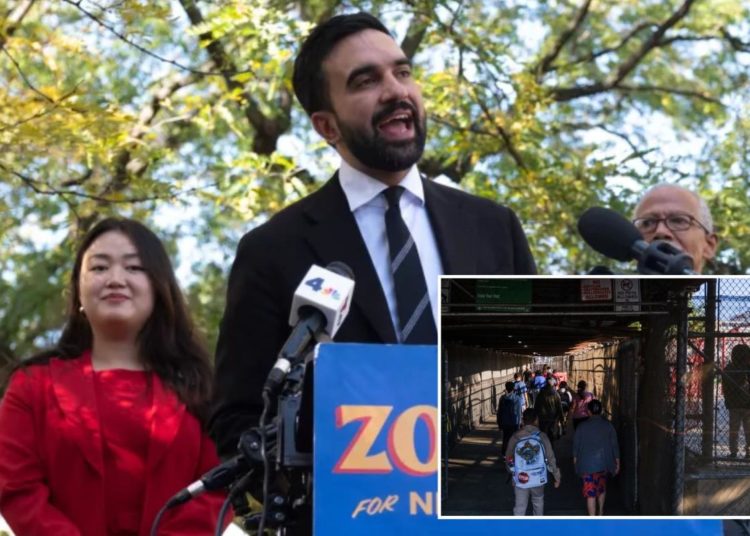When actor and filmmaker Mel Gibson grumbled during a recent podcast appearance that it was cheaper to fly his entire U.S.-based crew to Bulgaria for three days than to shoot just one day in California, he echoed the same eulogy sounded across three national outlets. The Wall Street Journal called Los Angeles’ entertainment economy a “disaster movie.” The DailyMail warned that California is “the next Detroit.” And UnHerd columnist Joel Kotkin (a contributing writer to L.A. Times Opinion) noted that L.A. is losing not only its creative workforce but its visitors.
All of that may be true in part, but every obituary of Hollywood misses the same plot twist.
Yes, traditional studio filmmaking is shrinking as tax incentives instituted in other states and countries lure productions away. But Los Angeles is no longer defined by only its soundstages. It’s defined by its talent — and the talent in California is not vanishing; it’s evolving.
Walk through Culver City or Burbank and cranes still fill the skyline, not to build backlots but for construction of new media campuses, post-production labs and tech-meets-storytelling start-ups. The next generation of production companies — digital-first studios, brand-funded entertainment firms, short-form production collectives and podcast networks — is being established here. They may not yet be household names, but their reach is already global.
During the early days of radio and television, announcers often opened shows with lines like “brought to you by Purina” or “presented by Colgate.” Today, that tradition of brand-backed storytelling has evolved into a modern ecosystem of small creative businesses: lean teams producing high-impact series for social platforms, streaming channels and direct-to-brand partnerships like Apple’s “Shot on iPhone” campaign. They hire editors, composers, camera operators and writers, many of the same professionals once employed by legacy studios.
One of the fastest-growing creative spaces in L.A. is immersive and mixed-reality studios, with companies designing fresh experiences that blend physical and virtual spaces through VR, AR, domes, projection mapping and interactive installations. Audiences want experiential storytelling that you can enter, not just watch. Cheaper VR and AR hardware, immersive tools and advanced 3-D software make high-quality work possible.
As Hollywood evolves, there’s growing demand for new formats that bridge tech, story and place. Brands and venues are crafting “Instagram-able” activations to draw people inside and investors are backing the trend, with immersive production companies including Meow Wolf, Illuminarium and Cosm planning venues across Greater Los Angeles.
In 2024, one of the fastest-growing segments of California’s entertainment economy was branded and creator-led storytelling, a sector that didn’t even exist 20 years ago.
The infrastructure of creativity is also shifting. Affordable production technology has liberated a generation of filmmakers from the soundstage. Remote editing, virtual 3-D sets and cloud-based collaboration allow stories to be designed and produced from anywhere, yet California remains the command center — the place where talent converges.
Over the last few years, podcasts have also become a powerful new lane for top talent, offering both creative freedom and significant audience reach. And in that time, the space has exploded to become a serious extension of the entertainment industry.
This is a reminder that L.A. creatives adapt faster than anyone else, constantly reinventing how stories are told and consumed. These innovations are fueled by the city’s mixture of talent, technology and storytelling traditions.
Another truth rarely appears in the gloomy headlines: The world still looks to Los Angeles for cultural leadership. The studios may have competition throughout the world, but the state continues to export its imagination. From animation to gaming, from music videos to YouTube empires, California remains the global heartbeat of storytelling.
Recent comparisons to Detroit misunderstand what makes each city remarkable. The Motor City’s decline was largely due to companies offshoring innovation to cheaper factories abroad. Los Angeles’ challenge is the opposite: an overabundance of innovation that is decentralizing faster than anyone expected. The industry is not dying; it is diversifying.
This moment, uncomfortable as it may be, is exactly what Hollywood needs. Periods of contraction force creative focus. They strip away excess and invite reinvention. The future of entertainment will not be dictated by geography but by imagination, and that is where California has always had a home-field advantage.
Mel Gibson may be right that it is cheaper to film in Bulgaria. But the world doesn’t go to Bulgaria to find talent. Talent still calls California home.
Rachel Zaslansky Sheer and Lori Zuker Briller are the co-authors of the upcoming book “Straight from the Grapevine.”
The post Contributor: Hollywood isn’t dying, it’s rewriting its script appeared first on Los Angeles Times.




